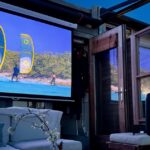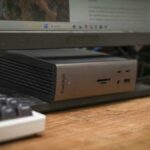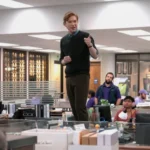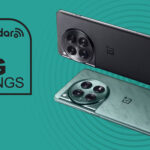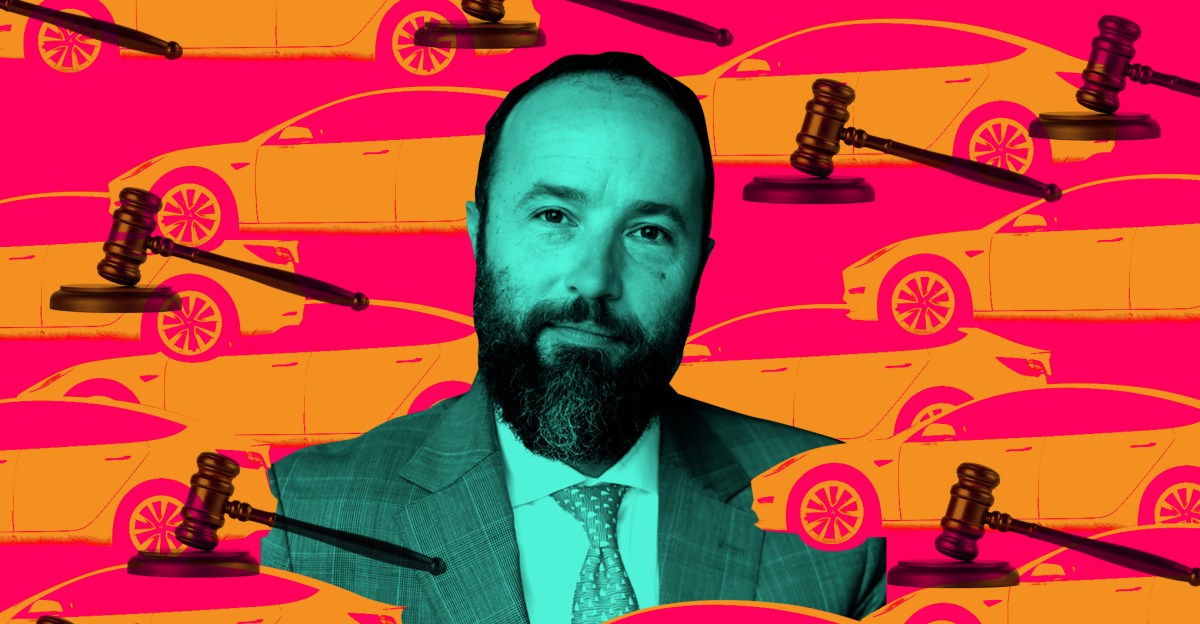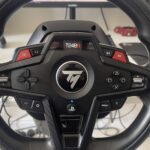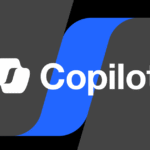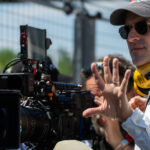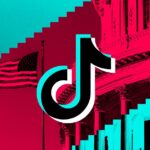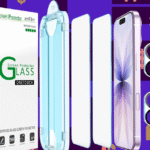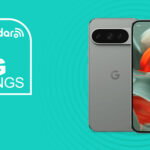The day after he won an unprecedented $243 million verdict in a wrongful death case against Tesla, attorney Brett Schreiber posted a reel on Instagram celebrating the victory. His song pick: 1992’s “Damn It Feels Good To Be a Gangsta” by the Geto Boys.
“This is a verdict that will change the world,” Schreiber wrote in the caption, as Bushwick Bill, Willie D, and Scarface rap in the background about how “everything’s cool in the mind of a gangsta.”
If that sounds like hyperbole, mixed with a dose of macho boasting, you’re not wrong. But in some sense, Schreiber earned his right to strut.
The day before posting the reel, he stood in a Florida courtroom alongside his clients as a jury handed Tesla a major defeat. The company was partially responsible — 33 percent, to be exact — for a 2019 crash that killed 22-year-old Naibel Benavides and seriously injured her boyfriend, Dillon Angulo. (It was determined that the driver of the Tesla Model S invovled, George McGee, was mostly responsible. McGee settled with the families in 2021.) The company was ordered to pay as much as $243 million in punitive and compensatory damages to Angulo and Benavides’ family. It’s a huge sum, though one that could be reduced on appeal.
The verdict was highly unusual, insofar as the case even went to trial. Tesla has studiously avoided facing juries in fatality cases involving its driver assist technology, preferring to settle with the injured parties. But when it has gone to trial, it typically wins, such as in two previous cases in California.
The winning streak came to an end with Schreiber’s case. We spoke a few days after the decision about his historic win, how he used Elon Musk’s own words to bolster his case, and how Tesla could face even steeper fines in the many lawsuits that are still pending.
This transcript has been edited for clarity.
I’ve been following Tesla for a very long time and I know that the company has a pretty solid track record of avoiding these types of judgments. Why do you think this was different?
Well, I mean, they did make an overture to settle the case, and for a very large sum of money. Now, it was a fraction of the verdict, but the condition of the settlement was that it would be secret. And my clients were not interested in a secret settlement. They knew that this was a case and a cause that was bigger than themselves. And it was important to them that we shine a light on what Tesla has done.
My theme in my closing argument was about Tesla’s choices and Tesla’s words. And to your point as to why they’ve been successful, I think it’s in part because there are two Teslas. There’s Tesla in the showroom and then there’s Tesla in the courtroom. And Tesla in the showroom tells you that they’ve invented the greatest full self-driving car the world has ever seen. Mr. Musk has been peddling to consumers and investors for more than a decade that the cars are fully self-driving, that the hardware is capable of full autonomy. And those statements were as untrue the day he said them as they remain untrue today. But then they showed up in a courtroom and they say, No, no, no, this is nothing but a driver assistance feature.
“My theme in my closing argument was about Tesla’s choices and Tesla’s words.”
Words matter. Choices matter. … Sometime later today or tomorrow, whenever the clerk finally approves it, all of the admitted trial exhibits are going to be publicly filed on the federal docket in Miami. Documents that only I and the lawyers involved in this case have seen, which shows Tesla knew about people’s constant misuse of their system. They knew how they were misusing it. They knew why they were misusing it. And they knew when they were misusing it — going back a decade. And I would encourage you and anybody else who’s been following these to log on to Pacer and to pull those exhibits down because they have never been seen before. And I have been saying for well over a year that the only way that this information was ever going to become public was inside of a courtroom.
And we did that, and the only reason we were able to do that was because the Benavides and Angulo families were courageous enough to stand up to the largest corporation in the world and say, No, you are not going to settle this in secret. This is going to be shared publicly. And the jury saw it with a unanimous verdict. They sent a message to Tesla. Your choices and your words matter. Do better.
I wanted to ask you about how you presented this case to the jury. And specifically the role that Elon Musk and his words played. You made a very pointed show of bringing in comments from the Tesla CEO. Can you talk a little bit about the role that you think that his past comments about Tesla’s Autopilot and about its self-driving capabilities played in this particular trial?
[Musk’s words] were central to it. … The jury is asked about the expectation of an ordinary consumer. What would an ordinary consumer expect this vehicle to do? It didn’t actually matter what the driver himself thought. Now, his feelings about this were very consistent with Musk’s statements, but [Musk] says these things for a reason. He says this to create this idea in the public’s mind that these cars are more than they really are. He makes these comments going back to 2015. Autonomous driving is a solved problem. They are safer than humans. It will stop for anything. It knows if there’s something metal and something dense in front of it, it should stop. It doesn’t matter if it’s an alien spaceship, he said. And we played all of those because that aligns with the law.
I said, “Look, you may know that Chick-fil-A has a cow running around telling you to eat more chicken and that LiMu the emu and Doug wants you to buy Liberty Mutual insurance. And that Geico has a gecko that peddles its products.” I said, “No one knows who Andrew Cathy, Tim Sweeney, and Todd Combs are. They are the CEOs of those companies. And even though no one’s heard of them … the decisions they make and the words they speak define what an ordinary consumer thinks of their company and the products they sell.” And I said the same is true of Elon Musk and Tesla. They cannot escape the fact that they have represented for a decade that they have invented and made a vehicle to the public that is the greatest, most advanced, Enhanced Autopilot driving vehicle the world has ever seen. And then they show up in court and they go, Well, there’s no vehicle in 2019 that would have ever stopped under this scenario. It’s a T intersection. It’s a broadside hit. Blah, blah, blah. Well, that opened the door to me to say, “You cannot make these statements publicly and then use as a defense in trial the fact that the car that you’ve claimed for a decade you invented doesn’t actually exist.” The jury saw through it.
This is a type of technology that is used throughout the auto industry. Other car companies have a variety of ADAS technologies that are out there. What’s different about Tesla’s approach? And how did that contribute to this crash, in your opinion?
[GM’s] Super Cruise, [Ford’s] BlueCruise, right, those were similar vintage-era Level 2 systems. They had driver monitoring systems that actually worked. They use infrared cameras. They had systems that were geofenced. You could only use them on certain roadways that they were designed for. A lot of other systems at the time, I think Infiniti, Nissan, Honda, and somebody else I can’t remember right now had a system where if you override the adaptive cruise control, the lane centering shuts off. Because you’re either going to use it or you’re not. Tesla didn’t do any of those things.
That was their choice. And that goes back to the whole thing that makes them the outlier. This was not a car company that got into tech. This was a tech company that got into cars. And their production process was unlike what any other responsible automotive manufacturer has ever done. Rather than ensuring that things were ready for prime time, rather than releasing a finished product, they released a beta product. But they tell you, We call it beta, but we don’t really mean it’s beta. Again, they use words to the point where they become meaningless.
“This was not a car company that got into tech. This was a tech company that got into cars.”
I’m sure you’ve been online and you’ve seen some reactions to this verdict. I’ve seen a few from Tesla’s fan base, which is quite substantive. And they talk about how the technology in [George] McGee’s vehicle, Autopilot, is an outdated system — it hasn’t been updated since 2019 — whereas most of the current system, Full Self-Driving or FSD, is supposed to be measurably better. Do they have a point? Or is it beside the point for the outcome of this jury?
For the outcome of this jury, it is beside the point. We could not introduce evidence about 2023 and 2024 and later developments. But I got news for the fan base. It’s not better. They’ve actually eliminated radar. They’ve got cameras only. It doesn’t work. Everyone who knows anything and who’s been following and paying attention in autonomous vehicle development for the last decade knows that the holy trinity of safety is lidar, radar, and cameras. You cannot create a camera-based-only system that is going to be better than a human driver. It’s not possible. It’s not done. They sure as heck haven’t done it. And their fusion system … continues to fail. You will see internal documents produced by Tesla where they determine that in 6 percent of the crashes that they received information on in 2019, they themselves determined that Autopilot was at fault.
It’s so stupid, but my point is, it’s not better. It’s a three-legged stool. If you take one of the legs out, the other two fall down. Like I said, I’ll tip my hat to Waymo. I’ll tip my hat to those guys. They geofence. They three-dimensionally map, they tie in infrastructure, they use lidar, they use radar, they use cameras. Are they perfect? No. And that’s the other thing I want to be really clear about. We are not anti-autonomous vehicle technology. We are not anti-progress. To the contrary, we think this stuff can and will save lives. It just has to be done the right way. And Tesla’s done it the wrong way. And this unanimous jury who sat for three weeks listening to 40-plus hours a week of testimony and evidence felt the same way.
Can you talk about what the trial revealed about how Tesla handles its Autopilot data, and also how it interacts with law enforcement when incidents arise and they need access to that data?
The docket should be fully unsealed in about three weeks. The court has ordered that and has given Tesla an opportunity to file a brief about anything specifically they want to keep under wraps. I am confident that the motion that we brought for sanctions against them for withholding evidence for four years will become fully unsealed. It would be irresponsible for me to say more than what they’ve said, but suffice it to say, there is more to that story, and it will be set out.
But to that end, I can say that Tesla has a system of gathering data. They receive it immediately after crashes. And it is a very fair, I would say almost generous, statement to say that they’re not always forthright with that information. And it’s in part because people just don’t understand it. Law enforcement doesn’t understand it. Government investigators don’t understand it. Through this case, we actually understood it better than even Tesla’s lawyers did. Now, the in-house people knew. And again, I can’t say whose decision it was to delete the data. But somebody at Tesla knew that if this information on the heels, six weeks later after the Jeremy Banner crash occurred in Deerfield Beach, Florida, that having another Autopilot fatality, that they knew that law enforcement wanted to share with federal investigators, they knew that would be bad for business. Why they did it? Only they can answer that question.
“I am confident that the motion that we brought for sanctions against them for withholding evidence for four years will become fully unsealed.”
Tesla right now is trying to roll out a robotaxi service in a number of cities. What would you say to people who are interested in this, curious about trying out these vehicles, to regulators who are weighing whether to approve Tesla’s requests?
I would say that this verdict hopefully sends a very clear message to Tesla. That they need to do better. They need to elevate people’s lives and people’s safety over greed and profits. That’s what I told the jury in closing argument, that this was not only just an opportunity. I know that jury instruction talks about punishing Tesla and deterring bad conduct. But I told them really this was an opportunity for them to help Tesla, because when a company gets to a point where they’re elevating profits and greed over people’s lives and safety, then that is a company that has lost its way. That is a company that needs to have its course corrected. What I hope, through their efforts at developing a Level 4 system, is that Tesla will receive this message for what it was. It’s an opportunity and a teachable moment to be better.
The problem is … it’s my understanding that it is a camera-only-based system. That’s a problem. Right, the megapixels on the cameras, on a 2025 Tesla, if they’re anything like what they’re putting on the robotaxi, have a lower megapixel resolution than my iPhone. The human eye is 250 megapixels. Be better. There’s a reason why responsible manufacturers are doing this differently. And again, is it hubris? Is it greed? I don’t know. I don’t know what this motivation is to double down and just try to do it the way that, Oh, we can do it this way and no one else can. I struggle with that. I’m just a lawyer. What do I know? But engineers, people who have spent decades, careers, lifetimes studying this stuff, have reached the same conclusions. So my hope is that they pause. They look at what they’re doing and they find ways to do it better. To do it safer.
That’s what this verdict was about: sending a message that you cannot use our public roadways as your personal laboratory to test production vehicles. And then when you discover that an incident occurs, that you make an incremental change. That’s what their corporate representative said. And as I said a couple of times publicly and told the jury, an incident to the families impacted is known as a funeral. These are people’s lives that you’re playing with. So my hope is that they really think about their approach. I hope that consumers demand that they rethink their approach. I hope that analysts looking at the impact of this verdict and potential verdicts in the future tell them that they need to do better. Because I think that’s the only way that we’re going to ever see it really change. It seems likely that there will need to be more of these types of verdicts before we do see some change, either from the company or from the way that the market views the company.
“Is it hubris? Is it greed? I don’t know.”
Now that we have this verdict, I’m curious to know what you think it’s going to mean for future cases pending against Tesla?
Round two, Maldonado v. Tesla, Alameda State Superior Court, 75 days from today. Tesla’s going to find out. I’m the plaintiff’s lawyer in that case. And I am not limited in California to a 3x multiplier on punitives. If I had asked that jury in Florida for a billion dollars, they would have given it to me. But I couldn’t ask them for that. Florida law says punitives can only be three times compensatories. I asked for $104 million in compensatories. They gave me $129 [million].
I got to tell you something, as a trial lawyer, to get $25 million over your ask is unheard of. They would have given me anything I asked for, not because it was me, but because of the facts. The facts are a stubborn thing. And we get to tell those same facts with a better Autopilot defect theory. And I get to not only juxtapose Musk’s lies in that case, but I juxtapose them with the testimony that I didn’t have in Miami. I’ve only had this case for a year. I worked the Maldonado case from the beginning. And in that case, I have testimony from all of the senior Autopilot leadership: Sterling Anderson, CJ Moore, Andrej Karpathy. And I show them those same quotes that were played to that jury in Miami. I said, “When Mr. Musk said those things, was that a true statement about production vehicles at Tesla?” To a person, they answer: Absolutely not.
He not only betrayed the public, he betrayed his own engineers. Betrayal is the most powerful human emotion there is, especially when it comes to rendering a verdict and holding a company account. That’s what round two is going to look like in 75 days. That should be very interesting.
Read the full article here


